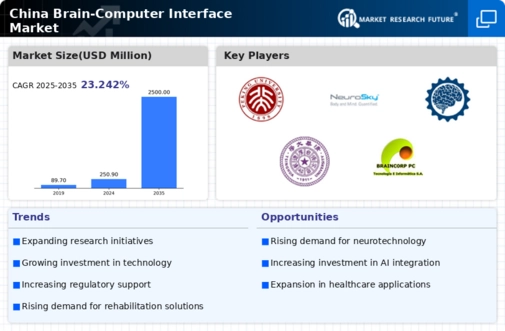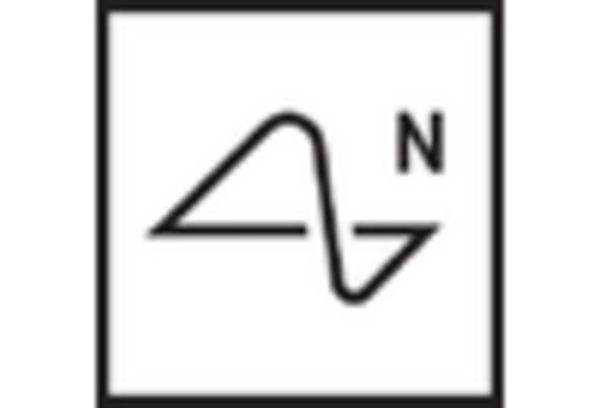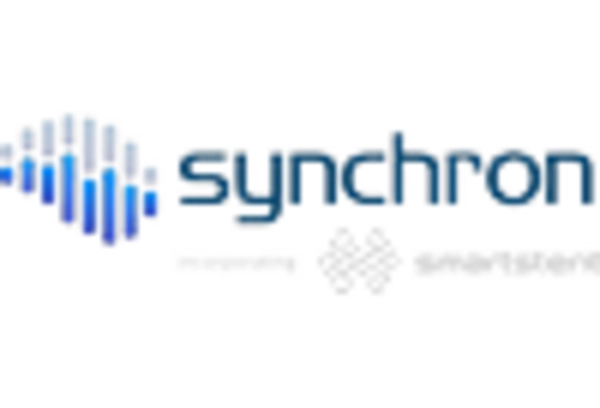Government Support and Funding Initiatives
The brain computer-interface market in China benefits from robust government support and funding initiatives aimed at fostering innovation in this field. The Chinese government has recognized the potential of brain-computer interfaces in enhancing healthcare and technology sectors. Various funding programs and grants are being allocated to research institutions and startups focusing on developing advanced brain-computer interface technologies. This support is expected to catalyze growth, with estimates indicating that public funding could contribute to a market expansion of approximately 25% by 2025. Such initiatives are crucial for positioning China as a leader in the brain computer-interface market.
Technological Advancements in Neuroscience
The brain computer-interface market in China is experiencing a surge due to rapid advancements in neuroscience technologies. Innovations in neuroimaging and signal processing are enhancing the accuracy and efficiency of brain-computer interfaces. For instance, the development of non-invasive techniques, such as functional magnetic resonance imaging (fMRI) and electroencephalography (EEG), is enabling more precise brain activity monitoring. This progress is likely to attract significant investment, with projections indicating that the market could reach approximately $1.5 billion by 2027. As research institutions and tech companies collaborate, the brain computer-interface market is poised for substantial growth, driven by these technological breakthroughs.
Growing Demand for Rehabilitation Solutions
The brain computer-interface market in China is increasingly driven by the rising demand for rehabilitation solutions, particularly for individuals with neurological disorders. The aging population and the prevalence of conditions such as stroke and spinal cord injuries are creating a pressing need for effective rehabilitation technologies. Brain-computer interfaces offer promising solutions for restoring motor functions and enhancing communication abilities. Reports suggest that the rehabilitation segment could account for over 40% of the market share by 2026, reflecting the urgent need for innovative therapies. This growing demand is likely to propel investments in the brain computer-interface market, fostering further advancements.
Rising Awareness of Mental Health Solutions
The brain computer-interface market in China is also being propelled by a growing awareness of mental health solutions. As mental health issues gain recognition, there is an increasing interest in technologies that can assist in diagnosis and treatment. Brain-computer interfaces have the potential to provide insights into brain activity related to mental health conditions, offering new avenues for therapeutic interventions. Market analysts suggest that this segment could see a growth of approximately 20% by 2026, as more healthcare providers and patients seek innovative solutions. This rising awareness is likely to play a pivotal role in shaping the future of the brain computer-interface market.
Increased Collaboration Between Academia and Industry
The brain computer-interface market in China is witnessing a notable increase in collaboration between academic institutions and industry players. This synergy is fostering innovation and accelerating the development of new technologies. Universities are partnering with tech companies to conduct research and develop practical applications for brain-computer interfaces. Such collaborations are likely to enhance the commercialization of research findings, potentially leading to a market growth rate of around 30% over the next few years. This trend indicates a promising future for the brain computer-interface market, as it bridges the gap between theoretical research and real-world applications.

















Leave a Comment